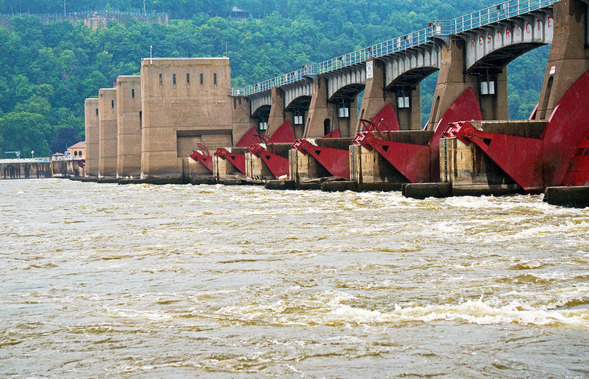Mud shapes life on Earth and regulates the planet’s climate by storing and cycling carbon. In a study published in Nature Geoscience, scientists from the University of Florida and eight other institutions found that human actions are altering the journey of mud, which has implications for understanding past changes in climate and what future scenarios might look like.
“This unique medium we call mud that built the large deltas and floodplains of the world and where the early civilizations first thrived, is being re-routed in ways that we do not understand,” said Thomas Bianchi, Ph.D., lead author and Jon L. and Beverly A. Thompson endowed chair of geological sciences at the University of Florida Department of Geological Sciences. “These changes can impact the storage of organic matter and the fluxes of greenhouse gasses.”

Mud and the organic carbon in it can take hundreds of years to form, yet within a short time span from the 1950s to now — known as the Great Acceleration — human activities have disrupted this cycle. Changes in climate, land use, water management and disturbances in coasts and oceans are modifying the production, movement and burial of mud-organic carbon. The burial process is key to locking away carbon from the atmosphere, by storing it deeply under layers of mud and contributing to climate change reduction.
“Since the 1950s, the rapid increase of dams around the world is generally believed to be starving the coast of sediments,” said Bianchi.

The study found that human interventions are directly linked to increased mud-organic carbon movement and burial from sources such as mountain glaciers, land erosion, and dam and lake reservoirs. Coastal wetlands are likely experiencing a net decline of mud-organic carbon movement and burial. Scientists are uncertain about the changes in flows of mud-organic carbon for other environments, such as tidal flats and floodplains.
“The decrease of supply or increase in erosion of mud in coastal habitats, like mangroves and salt marshes, can seriously alter the burial of organic carbon in the coastal ocean,” said Bianchi. “These habitats are well known to be hot spots for organic carbon burial, providing an ecosystem service that can potentially help to slow down climate warming.”
While the scientific community has long focused on the Arctic, its attention has only recently shifted to the impact of climate change on the stability of mud-organic carbon in tropical regions.
“Crucial questions remain about how these human-driven alterations will influence the carbon cycle and climate in the 21st century,” said Bianchi. “We plan to look across mud transport across landscapes, from the mountain to the sea, to explore how humans continue to change the biosphere and how that impacts greenhouse gas cycling.”
—
By Megan Sam
